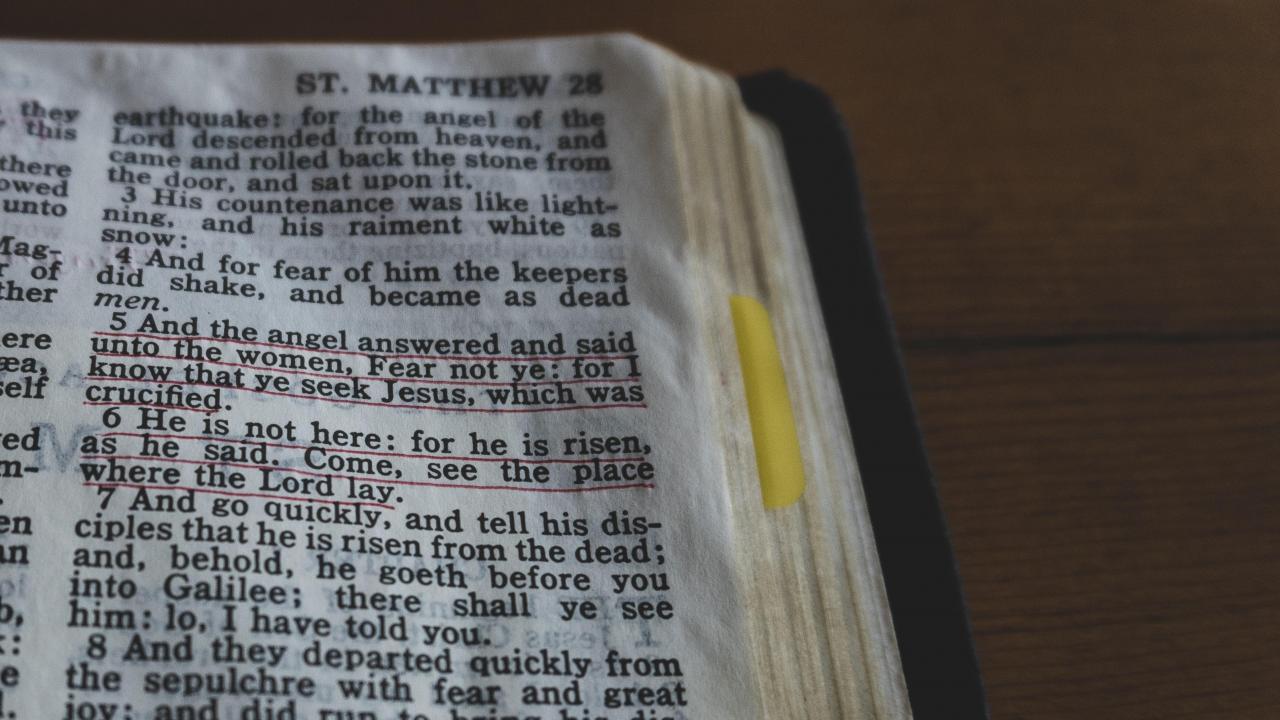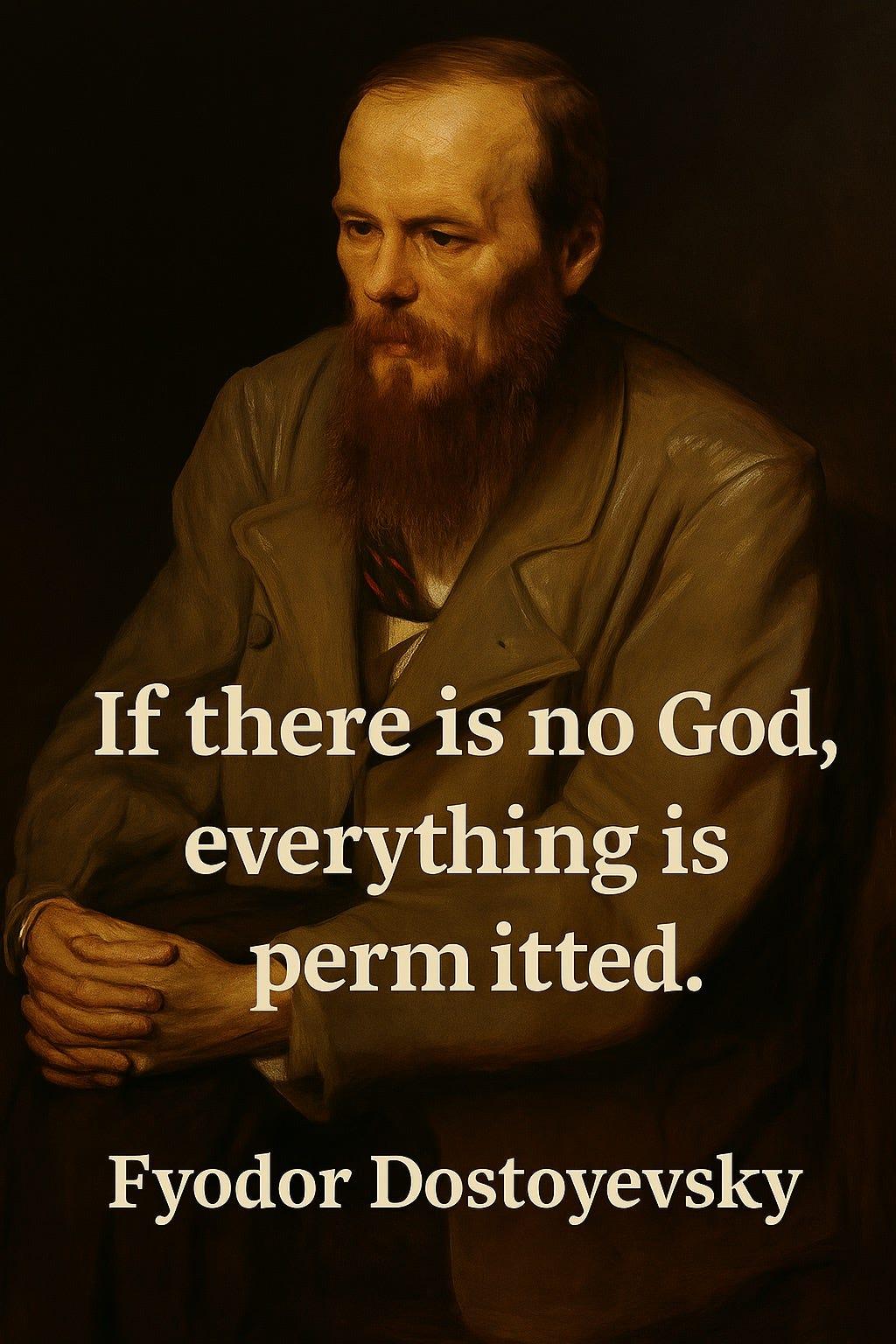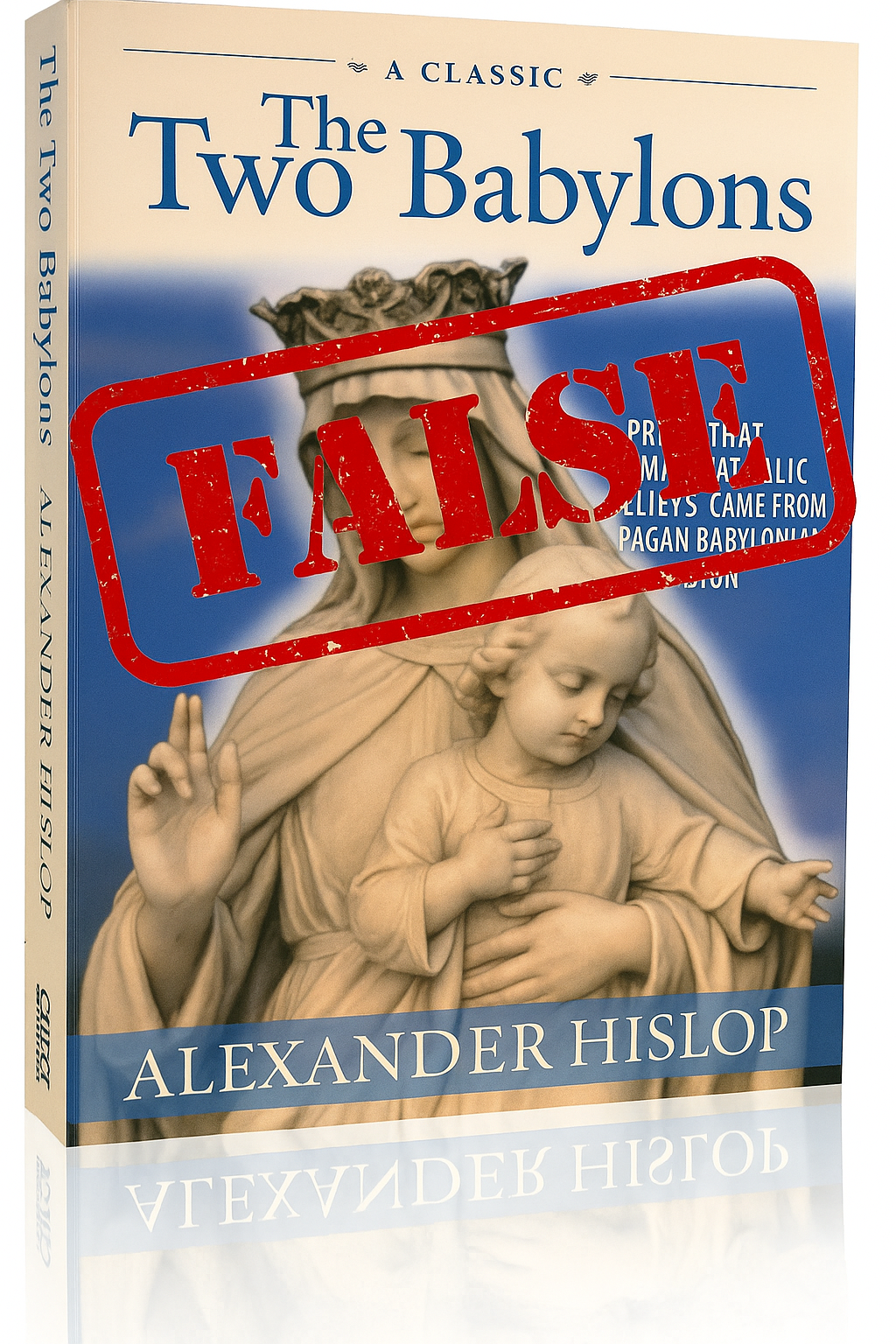The Deity of Christ in the Gospel of Matthew - Part 2

Matthew's theme - The divine presence of Jesus
This is a guest post by “KingsServant”, see Part 1 here.
Having covered Matthew’s introduction to his gospel in his nativity account, we will now consider the way Matthew “bookends” the gospel by beginning his work with the promise of God dwelling with his people (fulfilled in the incarnation) and ending it in the same way with Jesus’ comforting promise never to leave his followers.
This theme of Matthew begins with his quotation of Isaiah 7:14, which we have already analysed in the previous article with regard to how it reveals Matthew’s teaching that Jesus is God.
As noted before, in Matthew 1:23, Matthew draws special attention to the meaning of the name Immanuel and sees the birth of Jesus as necessary for its ultimate fulfilment.
Matthew 1:23: “Behold, the virgin will conceive and give birth to a Son, and they shall name Him Immanuel,” which translated means, “God with us.”
Matthew also ends his gospel, following the resurrection, with this promise of Jesus;
(Matthew 28:20): “…teaching them to follow all that I commanded you; and behold, I am with you always, to the end of the age.”
Matthew emphasises the point at both beginning and end that Jesus is “with us”. First, in 1:23 he combines this with calling Jesus God. Second, he records Jesus as claiming his perpetual presence with his people wherever they are.
To understand the importance of Matthew’s choice of this theme an overview of this subject in the Old Testament is needed.
In the book of Genesis man is created (and woman from his side), then they are placed in the garden of Eden where they enjoy the presence of God who walked with them, until they act disobediently to him after which he came to them and it is written;
(Genesis 3:8): “Now they heard the sound of the Lord God walking in the garden in the cool of the day, and the man and his wife hid themselves from the presence of the Lord God among the trees of the garden.”
The result is a curse on the ground and the tempter who led them to sin.
Along with this curse God pronounced judgement on them, man was driven out of the garden, separated from the presence of God and the tree of life that could enable them to live forever as sinners.
(Genesis 3:24): “So He drove the man out; and at the east of the Garden of Eden He stationed the cherubim and the flaming sword which turned every direction to guard the way to the tree of life.”
Since then God has been working towards reversing this event, undoing the effects of sin, chief among them the broken fellowship mankind has with God.
God chose Abraham as the one through whom his blessing will reach all nations (Genesis 12:3) and after calling his descendants out of Egypt orders the construction of the tabernacle saying (Exodus 25:8): “Have them construct a sanctuary for Me, so that I may dwell among them.”
The tabernacle construction included details for how priests could enter the presence of God as representatives of Israel. Part way through this, Jehovah again comments on his purpose:
(Exodus 29:42–45): “…where I will meet with you, to speak to you there. 43 I will meet there with the sons of Israel, and it shall be consecrated by My glory. 44 I will consecrate the tent of meeting and the altar; I will also consecrate Aaron and his sons to serve as priests to Me. 45 And I will dwell among the sons of Israel and will be their God. 46 And they shall know that I am the Lord their God who brought them out of the land of Egypt, so that I might dwell among them; I am the Lord their God.”
King David wanted to build a more permanent building for God to dwell in, but this request was denied to him although permitted to his son Solomon. Notice the words of Jehovah through the prophet Nathan to David:
(2 Samuel 7:5–7): “Go and say to My servant David, ‘This is what the Lord says: “Should you build Me a house for My dwelling? 6 For I have not dwelt in a house since the day I brought up the sons of Israel from Egypt, even to this day; rather, I have been moving about in a tent, that is, in a dwelling place. 7 Wherever I have gone with all the sons of Israel, did I speak a word with one of the tribes of Israel, whom I commanded to shepherd My people Israel, saying, ‘Why have you not built Me a house of cedar?’””
God is explicit about being in that tent and moving with it, he was content with that and did not ask for anything different. Eventually however in the time of Solomon, the temple was built as a fixed location for God to dwell, replacing the tabernacle and serving the same purpose.
In his prayer of dedication, Solomon said,
(1 Kings 8:27–30): “But will God indeed dwell on the earth? Behold, heaven and the highest heaven cannot contain You, how much less this house which I have built! 28 Nevertheless, turn Your attention to the prayer of Your servant and to his plea, Lord, my God, to listen to the cry and to the prayer which Your servant prays before You today, 29 so that Your eyes may be open toward this house night and day, toward the place of which You have said, ‘My name shall be there,’ to listen to the prayer which Your servant will pray toward this place. 30 And listen to the plea of Your servant and of Your people Israel, when they pray toward this place; hear in heaven Your dwelling place; hear and forgive!”
There are three correct answers to the question “where is God?”: in heaven, in the temple and that he is omnipresent, throughout space and time. God’s presence in a specific location on earth in no way negates his presence in heaven or his omnipresence. Notice how God is equated with his name, a point we will return to in a later article (Lord willing).
This temple was eventually destroyed because of the persistent sin of the people and a new “house of the Lord” (Ezra 1:3,5 etc) was constructed when people returned from captivity in Babylon.
Matthew sees the birth of Jesus Christ as a new depth in this continuing saga of God coming to dwell with his people. He points out that he is the fulfilment of the prophecy of Immanuel — “God with us” at the very beginning of his Gospel (John’s Gospel presents the same theme with John 1:14 “And the Word became flesh, and dwelt (literally tabernacled) among us; and we saw His glory, glory as of the only Son from the Father, full of grace and truth.”). He is a more direct closer manifestation of God than had been experienced by mankind throughout history. God, not appearing in angelic form or some visual representation in a vision or dream, but actually becoming a man through a real human mother in order to be the Saviour of his people. (Matthew 1:21–23)
Matthew tells us his account of the life, death, and resurrection of Jesus, and how he accomplished his task of securing salvation for his people as predicted (Matthew 1:21). The gospel was written after his ascension. Matthew has one final question to ask. Having come closer to us than ever before and fulfilling his purpose, especially after predicting the destruction of the second temple, has Jesus left us? This is answered with a resounding “no!”; Jesus promised before ascending to heaven that he would always be with his people, even to the end of the age. (Matthew 28:20); “…behold, I am with you always, to the end of the age.”
Just as Solomon realised, the presence of God is not limited to a particular place where he is known to have placed his name. Jesus promises that his special presence will follow his disciples wherever they are until his return. His person is not limited to the location of his physical body — his temple. He has a nature which is transcendent, omnipresent, and unrestrained by space. In the book of Jeremiah, Jehovah describes himself as having this attribute (Jeremiah 23:23–24): ““Am I a God who is near,” declares the Lord, “And not a God far off? 24 Can a person hide himself in hiding places So that I do not see him?” declares the Lord. “Do I not fill the heavens and the earth?” declares the Lord” (see also Psalm 139).
In Matthew 28:20 Jesus is claiming an attribute of God alone and thereby claiming to be God. He uses the emphatic pronoun “I”, it is he himself who will be with them, not merely his teachings, prayers, memory or example.
Another statement of Jesus about his omnipresence is recorded earlier in Matthew (18:20): “…. where two or three have gathered together in My name, I am there in their midst.” He claims the ability to be in any location where people are gathered in his name, even simultaneously.
This recalls a passage in Exodus (Exodus 20:24): “…in every place where I cause My name to be remembered, I will come to you and bless you”
You have the direct parallel of location, name and presence, a gathering is also implicit in this text. What God promised and did in the Old Testament requiring his unique attributes, Jesus now promises and does in the New.
There is also a striking resemblance between Matthew 18:20 and a passage from the Talmud[1]
“Rabbi Chananya ben Teradyon says: But two who are sitting together and there are words of Torah [spoken] between them, the Divine Presence [Shekhinah] rests with them, as it is said (Mal 3:16): “Then those who feared the Lord spoke one with another, and the Lord hearkened and heard, and a book of remembrance was written before Him, for those who feared the Lord and for those who thought upon His Name.””
This is after the new testament because the Rabbi lived in the 2nd century AD, although the Rabbis claim that many of their traditions are very ancient, even in some cases from Moses himself. How is the similarity between these 2 texts best explained? The Rabbi is too late to be the source of the saying of Jesus, but also it would be most peculiar for a non-messianic Rabbi to be using Matthew as his source, taking a saying of Jesus from it and equating or replacing Jesus with the Shekhinah, especially in the presence of other parallels that have less correlation with Matthew 18:20. As a result most scholars agree that this is based on an earlier Jewish tradition, one from which these later rabbinic sayings were derived. These later rabbinic traditions and the similarity to what Jesus says in Matthew 18:20 suggest that in this saying Jesus is not only claiming omnipresence — a unique attribute of Yahweh but also identifying his presence as the divine presence of God.
I will conclude with a quote from Craig Keener[2] giving his summary of this theme in Matthew;
“Matthew does not think of “God with us” merely at Jesus’ birth, or during his earthly ministry, or in some abstract way. He revisits this issue toward the middle and end of his Gospel. In 18:20, Jesus announces, “Where two or three have come together in my name, I am in their midst.” In 28:18–20, Matthew’s Gospel closes with Jesus’ Great Commission. The final words indicate that as we continue carrying out this commission, Jesus will be with us: “I am always with you,” he declares, “even until the end of the age.” Jewish people understood that only God could be with them at all times. There could be no misunderstanding about who Jesus really is.”
Sources:
[1] M. Avot 3:2. Pirkei Avot 3:2 with Connections (sefaria.org)
[2] Jesus as Immanuel: God with us — Bible Background (craigkeener.com)
Leave a comment Like Back to Top Seen 1.1K times Liked 0 times
Enjoying this content?
Support my work by becoming a patron on Patreon!
By joining, you help fund the time, research, and effort that goes into creating this content — and you’ll also get access to exclusive perks and updates.
Even a small amount per month makes a real difference. Thank you for your support!
Subscribe to Updates
If you enjoyed this, why not subscribe to free email updates and join over 853 subscribers today!
My new book is out now! Order today wherever you get books
Recent Posts
Luke J. Wilson | 7 days ago | Islam
You are not alone. Around the world, many Muslims — people who already believe in one God, pray, and seek to live righteously — are drawn to know more about Jesus (ʿĪsā in Arabic). Some have heard He is more than a prophet. Some have sensed His presence in a dream or vision. And some simply long to know God more deeply, personally, and truly. So what does it mean to become a Christian? And how can you take that step? This guide is for you. 1. What Christians Believe About God and Jesus ➤ One God, Eternal and Good Christians believe in one God — the same Creator known to Abraham, Moses, and the prophets. But we also believe God is more personal and relational than many realise. In His love, He has revealed Himself as Father, Son (Jesus), and Holy Spirit — not three gods, but one God in three persons. ➤ Jesus Is More Than a Prophet Muslims honour Jesus as a great prophet, born of the virgin Mary. Christians also affirm this — but go further. The Bible teaches that Jesus is the Word of God (Kalimat Allāh), who became flesh to live among us. He performed miracles, healed the sick, raised the dead — and lived without sin.Jesus came not just to teach but to save — to bring us back to God by bearing our sins and rising again in victory over death. 2. Why Do We Need Saving? ➤ The Problem: Sin All people — no matter their religion — struggle with sin. We lie, get angry, feel jealous, act selfishly, or fail to love God fully. The Bible says: “All have sinned and fall short of the glory of God.” (Romans 3:23) Sin separates us from God. And no matter how many good deeds we do, we can never make ourselves perfect or holy before Him. ➤ The Solution: Jesus Because God loves us, He did not leave us in our sin. He sent Jesus, His eternal Word, to live as one of us. Jesus died willingly, offering His life as a sacrifice for our sins, then rose again on the third day. “But God proves his love for us in that while we still were sinners Christ died for us.” (Romans 5:8) 3. How Do I Become a Christian? Becoming a Christian is not about joining a Western religion. It’s about entering a relationship with God through faith in Jesus Christ. Here is what the Bible says: ✝️ 1. Believe in Jesus Believe that Jesus is the Son of God, that He died for your sins, and that He rose again. “If you confess with your lips that Jesus is Lord and believe in your heart that God raised him from the dead, you will be saved.” (Romans 10:9) 💔 2. Repent of Your Sins Turn away from sin and ask God to forgive you. This is called repentance. It means being truly sorry and choosing a new way. “Repent therefore, and turn to God so that your sins may be wiped out.” (Acts 3:19) 💧 3. Be Baptised Jesus commands His followers to be baptised in water as a sign of their new life. Baptism represents washing away your old life and rising into a new one with Jesus. “Repent and be baptised every one of you in the name of Jesus Christ so that your sins may be forgiven.” (Acts 2:38) 🕊️ 4. Receive the Holy Spirit When you believe in Jesus, God gives you the Holy Spirit to live within you, guiding you, comforting you, and helping you follow His will. “You received the Spirit of adoption, by whom we cry, ‘Abba! Father!’” (Romans 8:15) 🧎 5. Begin a New Life As a Christian, you are born again — spiritually renewed. You begin to grow in faith, love, and holiness. You read the Bible, pray, fast, and gather with other believers. Your life is no longer your own; you now live for God. 4. What Does a Christian Life Look Like? Jesus said: “If anyone wants to become my followers, let them deny themselves and take up their cross and follow me.” (Matthew 16:24) This means: Loving God with all your heart Loving your neighbour — even your enemies Forgiving others ...
Luke J. Wilson | 05th May 2025 | Politics
When we think about David and Saul, we often focus on David’s rise to kingship or his battle with Goliath. But hidden within that story is a deep lesson for today’s generation about leadership, resistance, and the power of revolutionary love. At a recent youth training event (thanks to South West Youth Ministries), I was asked how I would present the story of David and Saul to a Christian teenage youth group. My mind turned to the politics of their relationship, and how David accepted Saul’s leadership, even when Saul had gone badly astray. David recognised that Saul was still God’s anointed king — placed there by God Himself — and that it was not David’s place to violently remove him. Gen-Z are more politically aware and engaged than previous generations, and are growing up in a world where politics, leadership, and social issues seem impossible to escape. We live in a world where political leaders — whether Trump, Putin, Starmer, or others — are often seen as examples of failed leadership. It’s easy to slip into bitterness, cynicism, or violent rhetoric. These kids are immersed in a culture of activism and outrage. As Christians, we’re called to care deeply about truth and justice and approach leadership differently from the world around us (Hosea 6:6; Isaiah 1:17; Micah 6:8). The story of David and Saul offers pertinent lessons for our modern lives. Respect Without Endorsement David’s respect for Saul was not blind loyalty. He did not agree with Saul’s actions, nor did he ignore Saul’s evil. David fled from Saul’s violence; he challenged Saul’s paranoia; he even cut the corner of Saul’s robe to prove he had the chance to kill him but chose not to. Yet throughout, David refused to take matters into his own hands by force. Why? Because David understood that even flawed authority ultimately rested in God’s hands, he trusted that God would remove Saul at the right time. This is echoed later in the New Testament when Paul writes in Romans 13 that “there is no authority except from God, and those authorities that exist have been instituted by God”, something even Jesus reminded Pilate of during his trial (John 19:10–11). In other words, even flawed leadership can be part of God’s bigger plan, whether for blessing or discipline. Even when leaders go bad, our call as believers is to maintain integrity, respect the position, and resist evil through righteousness — not rebellion. David and Saul: A Lesson in Respect and Restraint Saul was Israel’s first king — anointed by God but later corrupted by pride, fear, and violence. David, chosen to succeed him, spent years running for his life from Saul’s jealous rage. One day, David found Saul alone and vulnerable in a cave. His men urged him to strike Saul down and end the conflict. But David refused: “I will not raise my hand against my lord; for he is the Lord’s anointed.” (1 Samuel 24:10) Instead of killing Saul, David cut off a piece of his robe to prove he could have harmed him, but didn’t. In doing so, he demonstrated a real form of nonviolent resistance. He stood firm against Saul’s injustice without resorting to injustice himself, and acted in a way that could try to humble Saul instead. Peacemaking Is Not Passivity There is a modern misconception that peacemaking means doing nothing and just letting injustice roll all over us. But true biblical peacemaking is not passive; it actively resists evil without becoming evil. Interestingly, David’s actions toward Saul also foreshadow the type of nonviolent resistance Jesus later taught. When Jesus commanded His followers to turn the other cheek, go the extra mile, and love their enemies, he was not calling for passive submission but offering what scholar Walter Wink describes as a “third way” — a bold, peaceful form of resistance that uses what he calls “moral jiu-jitsu” to expose injustice without resorting to violenc...
Luke J. Wilson | 21st April 2025 | Easter
Over the years, I’ve encountered many Christians who’ve quoted from Alexander Hislop’s The Two Babylons as if it were a solid historical resource. The book claims that the Roman Catholic Church is not truly Christian but rather a continuation of ancient Babylonian religion. It’s self-assured and sweeping, and for many people, it seems to explain everything, from Marian devotion to Lent and Easter, to Christmas, as rooted in paganism. But is it accurate? In short: no, it really isn’t. Hislop’s work is a classic example of 19th-century pseudohistory — a polemical piece, written to prove a point, not to explore any historical truth. Flawed Methods and Wild Claims Hislop argues that most Catholic practices — from the Mass and clerical robes to festivals like Christmas and Easter — were somehow borrowed from Babylonian religion. The problem being that Hislop doesn’t rely on primary sources or credible historical data. Instead, he draws connections based on word similarities (like Easter and Ishtar) or visual resemblances (like Mary and child compared with mother-goddess statues from ancient cultures). But phonetic resemblance isn’t evidence, and neither is visual similarity. For example, if I say “sun” and “son” in English, they may sound alike, but they aren’t the same thing. That’s the level of reasoning at work in much of The Two Babylons. Hislop often lumps together completely different ancient figures — Isis, Semiramis, Ishtar, Aphrodite — as if they were all just variations of the same deity. He then tries to say Mary is just the Christian version of this pagan goddess figure. But there’s no credible evidence for that at all. Mary is understood through the lens of Scripture and Christian theology, not through pagan myth. The earliest depictions of Mary and the Christ-child date back to the second century and do not resemble any of the pagan idols. But, again, the common accusations are based on superficial similarities of a woman nursing a child. That’s going to look the same no matter who or what does that! Oldest depiction of Mary. Dura-Europos Church, Syria, 2nd century What About Lent and Tammuz? One of Hislop’s more popular claims is that Lent comes from a Babylonian mourning ritual for the god Tammuz, mentioned in Ezekiel 8:14. He argues that early Christians borrowed the 40-day mourning period and just rebranded it. But this doesn’t line up with the evidence. Lent developed as a time of fasting and repentance leading up to Easter — especially for new believers preparing for baptism. The number forty comes from Scripture: Jesus’ forty days in the wilderness, Moses’ fast on Sinai, and Elijah’s journey to Horeb. Church Fathers like Irenaeus and Athanasius saw it as a time for self-denial and spiritual renewal — not mourning a pagan god. Yes, there are pagan festivals that involve seasonal death and rebirth stories. But similarity does not mean origin. If that logic held, then even Jesus’ resurrection would be suspect because pagan cultures also told resurrection-like stories. Yet the gospel stands apart — not because of myth but because of history and revelation. Why Hislop’s Work Persists Even though The Two Babylons is poor scholarship, it’s unfortunately had a long shelf life. That’s partly because it appeals to a certain kind of suspicion. If you’re already sceptical about the Catholic Church, Hislop offers an easy explanation: “It’s all pagan!”. But history isn’t ever that simple. And theology — especially the theology handed down through the ages by the faithful— isn’t built on conspiracy and apparent obscure connections, but on Christ and the truth of the Scriptures. Interestingly, even Ralph Woodrow, a minister who once wrote a book defending Hislop’s ideas, later retracted his views after digging deeper into the evidence. He eventually wrote a book called The Babylon Connect...
Darwin to Jesus | 16th April 2025 | Atheism
Guest post by Darwin to Jesus Dostoevsky famously said, “If there is no God, then everything is permitted.” For years, as an atheist, I couldn’t understand what he meant, but now I do… Here’s a simple analogy that shows why only theism can make sense of morality: Imagine you just got hired at a company. You show up, set up your desk, and decide to use two large monitors. No big deal, right? But then some random guy walks up to you and says: “Hey, you’re not allowed to do that.” You ask, “What do you mean?” They say, “You’re not permitted* to use monitors that big.” In this situation, the correct response would be: “Says who?” We’ll now explore the different kinds of answers you might hear — each one representing a popular moral theory without God — and why none of them actually work. Subjective Morality The random guy says, “Well, I personally just happen to not like big monitors. I find them annoying.” Notice that’s not a reason for you to change your setup. Their personal preferences don’t impose obligations on you. This is what subjective morality looks like. It reduces morality to private taste. If this were the answer, you’d be correct to ignore this person and get back to work — big monitors are still permitted. Cultural Relativism Instead, they say, “It’s not just me — most people here don’t use big monitors. It’s not our culture.” That’s cultural relativism: right and wrong are just social customs, what is normal behavior. But notice customs aren’t obligations. If the culture were different, the moral rule would be different, which means it isn’t really moral at all. You might not fit in. You might not be liked. But you’re still permitted to use big monitors. Emotivism Here after being asked “says who?” the person just blurts out, “Boo, big monitors!” You reply, “Hurrah, big monitors!” That’s the entire conversation. This is emotivism. On this moral theory when we talk about right and wrong we’re actually just expressing our personal feelings towards actions, I boo rape, you hurrah rape. But shouting “boo!” at someone doesn’t create real obligations. You’re still permitted to use large monitors. Utilitarianism Here, the person says, “Your big monitors lower the overall productivity of the office. You’re not permitted to use them because they lead to worse consequences.” This is utilitarianism: morality is based on producing the greatest happiness for the greatest number. But even if that’s true — so what? Who says you’re obligated to maximize group productivity? And what if your monitors actually help you work better? Utilitarianism might tell you what leads to better outcomes, but it doesn’t tell you why you’re morally obligated to follow that path — especially if it comes at your own expense. You’re still permitted to use large monitors. Virtue Ethics Here they say, “Using big monitors just doesn’t reflect the virtues we admire here — simplicity, humility, restraint.” This is virtue ethics. Morality is about becoming the right kind of person. But who defines those virtues? And why are you obligated to follow them? What if your idea of a virtuous worker includes productivity and confidence? Without a transcendent standard, virtues are just cultural preferences dressed up in moral language. If you don’t care about virtue or their arbitrary standards, then you have no obligation. You’re still permitted to use large monitors. Atheist Moral Realism But what if they say, “Listen, there’s a rule. It’s always been here. It says you can’t use monitors that large.” You ask, “Who made the rule?” They say, “No one.” You ask, “Who owns this company?” They say, “No one owns it. The company just exists.” You look around and ask, “Where is the rule?” They say, “You won’t find it w...








